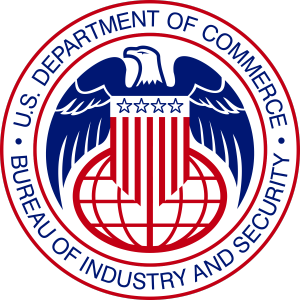Search
Published on:
U.S. Commerce Department Releases Proposed Rulemaking for Export Controls on Emerging Technologies
 On November 19, 2018, the U.S. Commerce Department’s Bureau of Industry and Security (BIS) issued a proposed rulemaking seeking public comment on criteria for identifying emerging technologies that are essential to U.S. national security.
On November 19, 2018, the U.S. Commerce Department’s Bureau of Industry and Security (BIS) issued a proposed rulemaking seeking public comment on criteria for identifying emerging technologies that are essential to U.S. national security.
The proposed rulemaking has two important impacts:
- Emerging technologies identified through this process will become subject to stricter export controls. This will impact exports and re-exports to a number of countries or employees from those countries, including China.
- Certain types of foreign investments in U.S. companies that develop identified emerging technologies will be subject to mandatory filings with the Committee on Foreign Investment in the United States (CFIUS). This includes minority, non-controlling equity investments that afford foreign investors certain rights.
BIS is currently seeking comment on: 1) how to define emerging technology to assist identification of such technology in the future; 2) criteria to apply to determine whether there are specific technologies within these general categories that are important to U.S. national security; 3) sources to identify such technologies; 4) other general technology categories that warrant review to identify emerging technology that are important to U.S. national security; 5) the status of development of these technologies in the United States and other countries; 6) the impact specific emerging technology controls would have on U.S. technological leadership; 7) any other approaches to the issue of identifying emerging technologies important to U.S. national security, including the stage of development or maturity level of an emerging technology that would warrant consideration for export control. The deadline to submit comments is December 19, 2018.
Please see below for the list of representative technology categories provided by BIS.
1. Biotechnology, such as:
- Nanobiology;
- Synthetic biology;
- Genomic and genetic engineering; or
- Neurotech.
2. Artificial intelligence (AI) and machine learning technology, such as:
- Neural networks and deep learning (e.g., brain modelling, time series prediction, classification);
- Evolution and genetic computation (e.g., genetic algorithms, genetic programming);
- Reinforcement learning;
- Computer vision (e.g., object recognition, image understanding);
- Expert systems (e.g., decision support systems, teaching systems);
- Speech and audio processing (e.g., speech recognition and production);
- Natural language processing (e.g., machine translation);
- Planning (e.g., scheduling, game playing);
- Audio and video manipulation technologies (e.g., voice cloning, deepfakes);
- AI cloud technologies; or
- AI chipsets
3. Position, Navigation, and Timing (PNT) technology
4. Microprocessor technology, such as:
- Systems-on-Chip (SoC)
- Stacked Memory on Chip
5. Advanced computing technology, such as:
- Memory-centric logic
6. Data analytics technology, such as:
- Visualization;
- Automated analysis algorithms; or
- Context-aware computing
7. Quantum information and sensing technology, such as:
- Quantum computing;
- Quantum encryption; or
- Quantum sensing
8. Logistics technology, such as:
- Mobile electric power;
- Modeling and simulation;
- Total asset visibility; or
- Distribution-based Logistics Systems (DBLS)
9. Additive manufacturing (e.g., 3D printing)
10. Robotics, such as:
- Micro-drone and micro-robotic systems;
- Swarming technology;
- Self-assembling robots;
- Molecular robotics;
- Robot compliers; or
- Smart Dust.
11. Brain-computer interfaces, such as:
- Neural-controlled interfaces;
- Mind-machine interfaces;
- Direct neural interfaces; or
- Brain-machine interfaces
12. Hypersonics, such as:
- Flight control algorithms;
- Propulsion technologies;
- Thermal protection systems; or
- Specialized materials (for structures, sensors, etc.).
13. Advanced Materials, such as:
- Adaptive camouflage;
- Functional textiles (e.g., advanced fiber and fabric technology); or
- Biomaterials
14. Advanced surveillance technologies, such as:
- Faceprint and voiceprint technologies
Note that the U.S. Commerce Department will be issuing a separate rulemaking for proposed controls on “foundational” technologies.
 Global Trade & Sanctions Law
Global Trade & Sanctions Law

